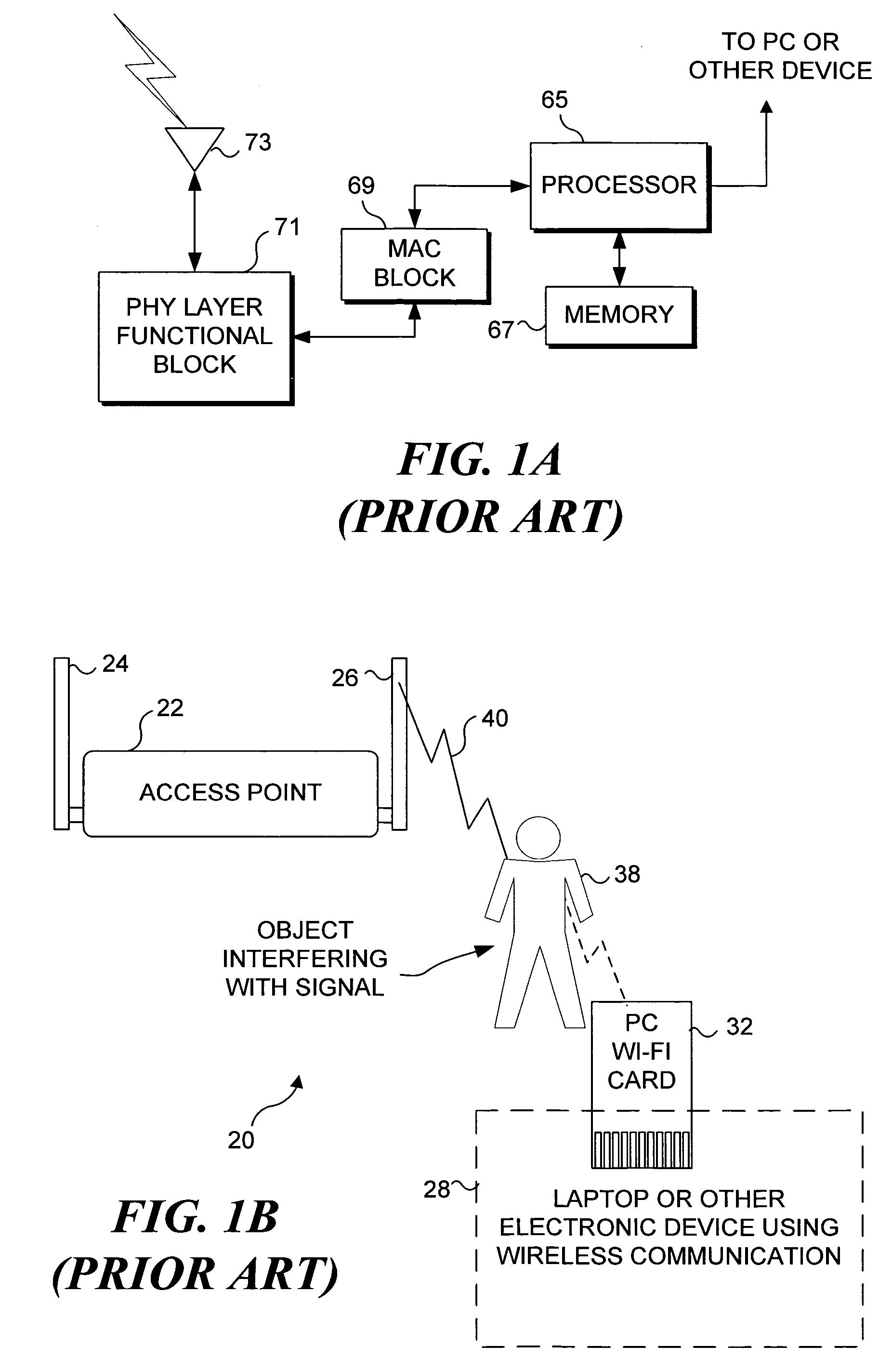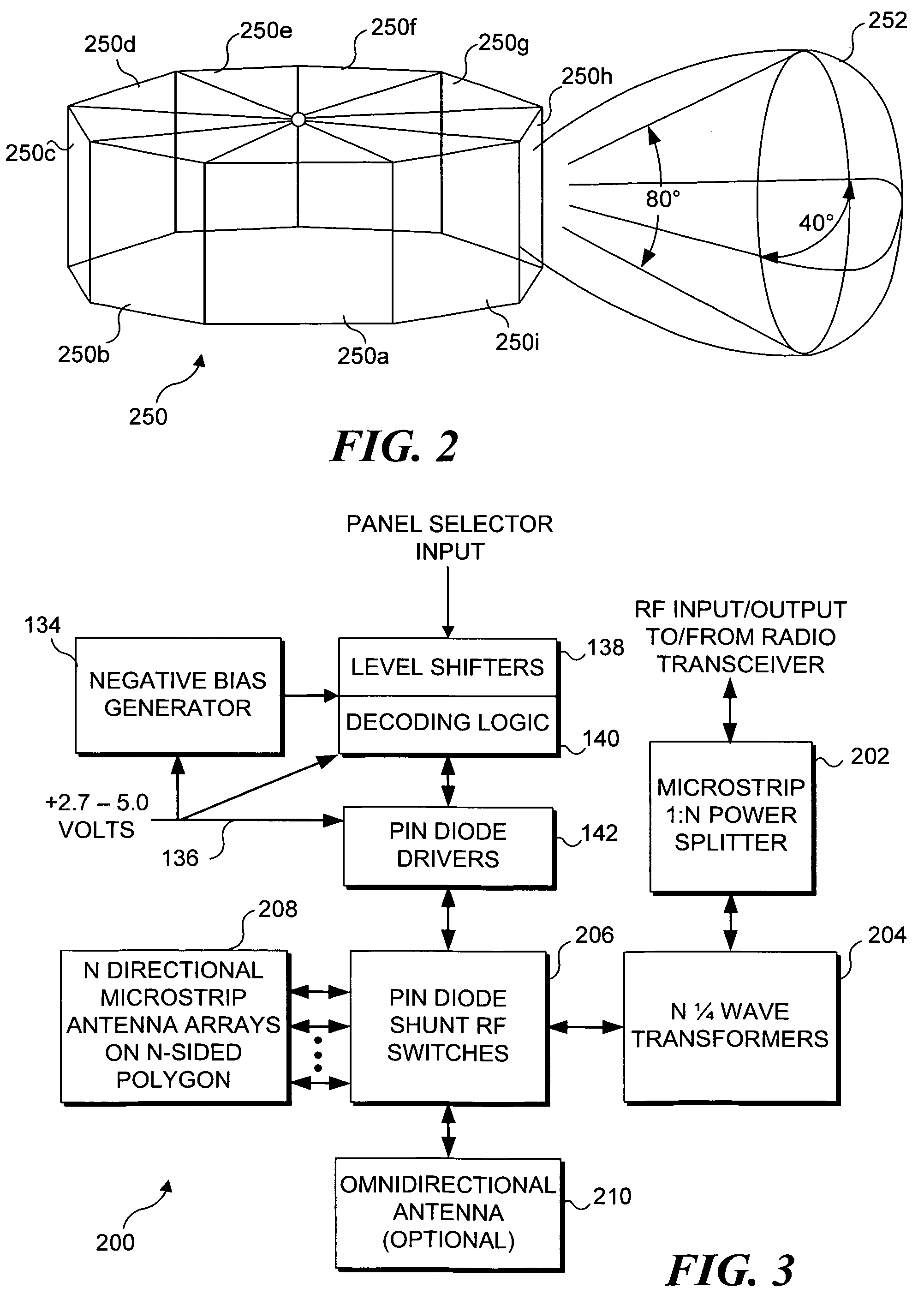Control of a multi-sectored antenna system to improve channel efficiency
a multi-sectored antenna and control technology, applied in the field of control of antennas, can solve problems such as problems such as the inability to achieve adequate rf coverage at a desired data throughput, the inability to control the range and data rate of such systems, and the inability to control the reception of client devices, so as to achieve a higher data rate and data rate
- Summary
- Abstract
- Description
- Claims
- Application Information
AI Technical Summary
Benefits of technology
Problems solved by technology
Method used
Image
Examples
Embodiment Construction
[0032]FIG. 1A (Prior Art) is a simplified functional block diagram of a typical wireless device like that usable with the present invention. This wireless device includes a processor 65 that is coupled to a PC or other computing device (not shown) so that data device can be communicated to the processor. Processor 65 is coupled to a memory 67, which stores machine instructions for processing the data and for carrying out other functions. A media access control (MAC) block 69 and physical (PHY) layer functional block 71 are disposed between processor 65 and an RE omnidirectional antenna 73. Although a second omnidirectional antenna is typically provided, only one is used at a time. This conventional wireless device does not include a directional antenna, and it is subject to the problems noted above communicating over a wireless network. An example of one of these problems is illustrated in FIG. 1B (Prior Art), which is discussed below.
[0033]In FIG. 1B, one of the problems commonly e...
PUM
 Login to View More
Login to View More Abstract
Description
Claims
Application Information
 Login to View More
Login to View More - R&D
- Intellectual Property
- Life Sciences
- Materials
- Tech Scout
- Unparalleled Data Quality
- Higher Quality Content
- 60% Fewer Hallucinations
Browse by: Latest US Patents, China's latest patents, Technical Efficacy Thesaurus, Application Domain, Technology Topic, Popular Technical Reports.
© 2025 PatSnap. All rights reserved.Legal|Privacy policy|Modern Slavery Act Transparency Statement|Sitemap|About US| Contact US: help@patsnap.com



